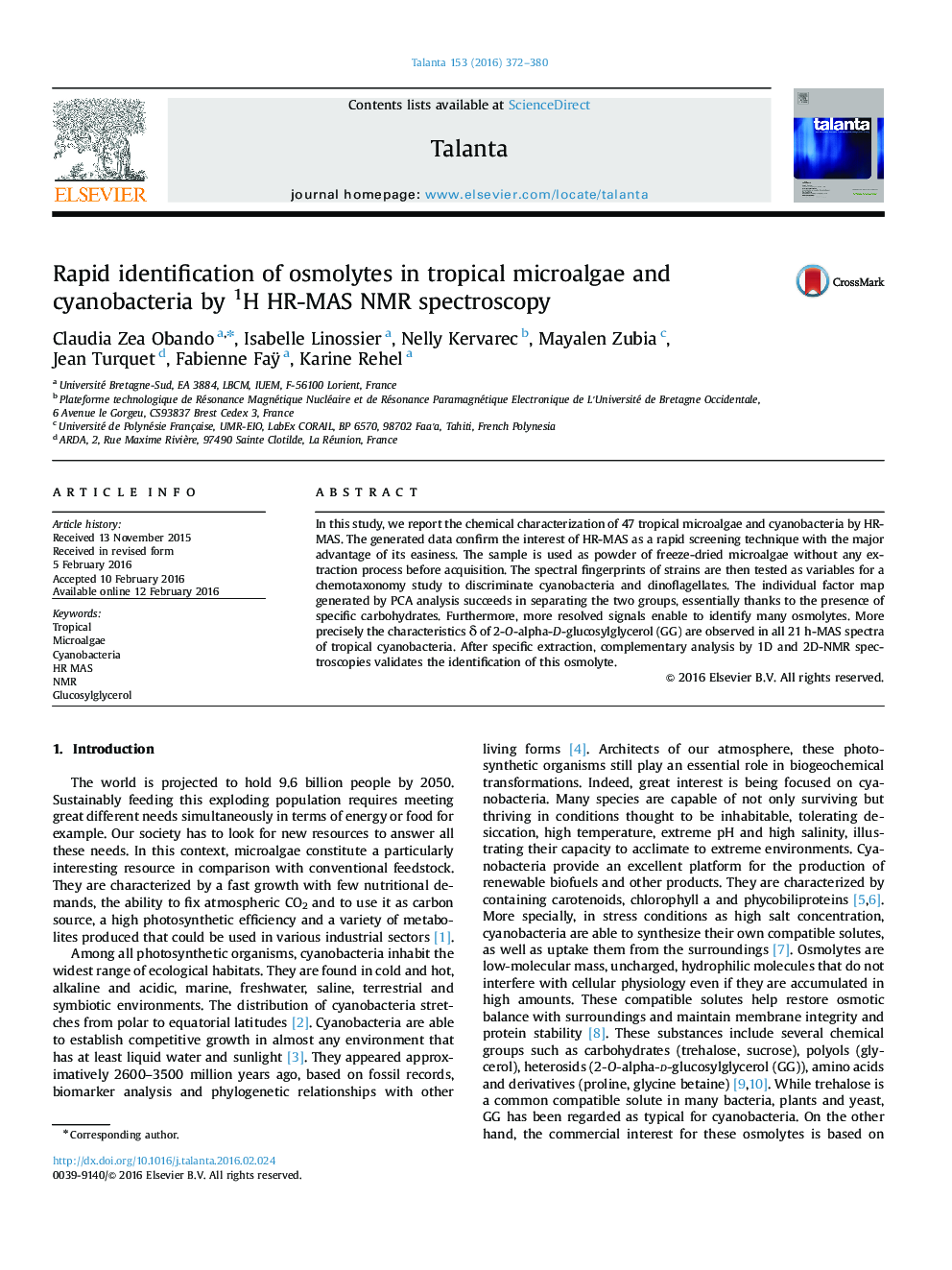| Article ID | Journal | Published Year | Pages | File Type |
|---|---|---|---|---|
| 1242597 | Talanta | 2016 | 9 Pages |
•HRMAS NMR permitted an overview of metabolites produced by the microalgae.•HRMAS NMR allowed pointing out taxonomical separation between cyanobacteria and dinoflagellata.•Taxonomical HRMAS NMR discrimination is mainly based on the presence of the 2-O-alpha-D-glucosylglycerol (GG) osmolyte in cyanobacteria.
In this study, we report the chemical characterization of 47 tropical microalgae and cyanobacteria by HR-MAS. The generated data confirm the interest of HR-MAS as a rapid screening technique with the major advantage of its easiness. The sample is used as powder of freeze-dried microalgae without any extraction process before acquisition. The spectral fingerprints of strains are then tested as variables for a chemotaxonomy study to discriminate cyanobacteria and dinoflagellates. The individual factor map generated by PCA analysis succeeds in separating the two groups, essentially thanks to the presence of specific carbohydrates. Furthermore, more resolved signals enable to identify many osmolytes. More precisely the characteristics δ of 2-O-alpha-D-glucosylglycerol (GG) are observed in all 21 h-MAS spectra of tropical cyanobacteria. After specific extraction, complementary analysis by 1D and 2D-NMR spectroscopies validates the identification of this osmolyte.
Graphical abstractFigure optionsDownload full-size imageDownload as PowerPoint slide
